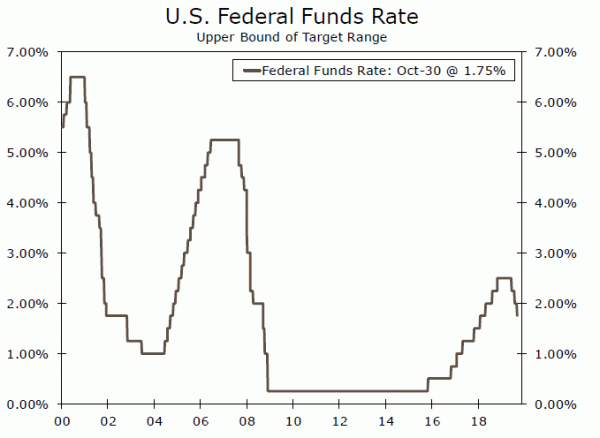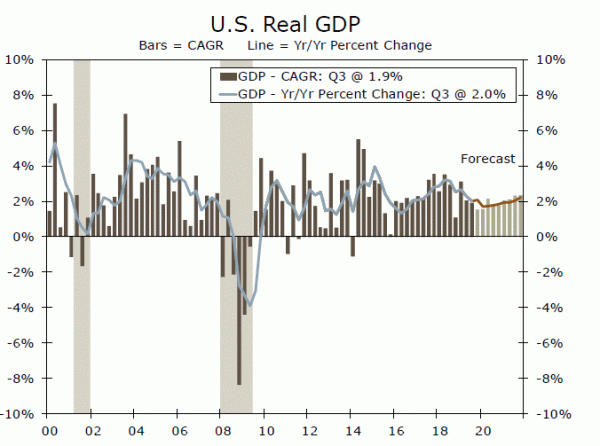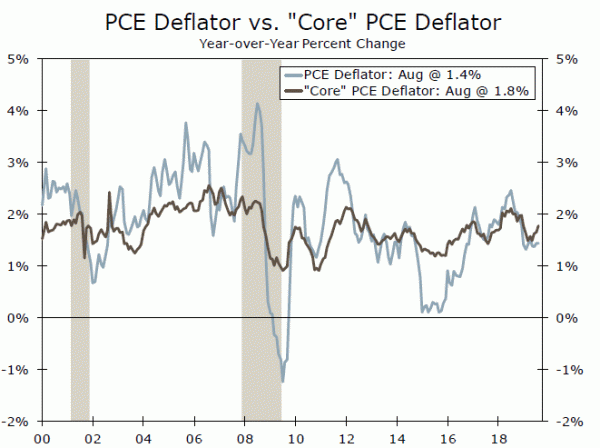The FOMC cut rates 25 bps at its policy meeting today. We think that the committee will opt to keep rates on hold in December, but we look for one more 25 bps rate cut early next year.
FOMC Cuts Rates 25 bps
As widely expected, the Federal Open Market Committee (FOMC) decided at its policy meeting today to reduce its target range for the fed funds rate 25 bps. The lower bound is now 1.50% and the upper bound now stands at 1.75%. The FOMC has now reduced its target range 75 bps since July (top chart). As in the two previous policy meetings, the presidents of the Boston and Kansas City Federal Reserve Banks dissented, preferring to leave rates unchanged.
The statement that was released after today’s FOMC meeting is almost identical to the statement following the September 18 meeting. Specifically, the committee characterized the labor market as “strong” at present, and it said that “economic activity has been rising at a moderate rate.” Indeed, data released earlier today showed that real GDP in Q3-2019 grew 1.9% (annualized) on a sequential basis and 2.0% on a year-over-year basis. (See our report for further details).
But the FOMC also noted that both the overall rate and the core rate of consumer price inflation are running below two percent, which is the Fed’s target, and that “market-based measures of inflation compensation” (i.e., inflation expectations) “remain low.” The committee vowed to “continue to monitor the implications of incoming information for the economic outlook as it assesses the appropriate path of the target range for the federal funds rate.” In other words, the FOMC does not appear to have a preconceived notion of how policy should evolve from here.
We Look for FOMC to Take a Pass in December
So the question now is what does the FOMC do next? In our view, the committee is in “wait-and-see” mode and will opt to leave rates unchanged at its December 11 policy meeting. The FOMC has cut rates 75 bps since July, and a pause may be warranted to assess how the economy is responding to the delayed effects of previous easing. Moreover, the continued dissents indicate that the committee is not unified in the belief that additional easing is necessary at this time.
That said, we believe the FOMC is not done cutting rates yet. As noted above, the economy expanded only 1.9% in Q3-2019, and we project that real GDP will again grow at a sub-2% rate in Q4 (middle chart). In conjunction with an inflation rate that is having difficulty edging above 2% on a sustained basis (bottom chart), we think the committee will decide to cut rates early next year (most likely at the January 29 meeting). If, as we forecast, real GDP growth edges a bit higher later next year, then we think the committee will decide that no further easing is needed. But we also think that the FOMC will refrain from raising rates for the foreseeable future. In other words, interest rates likely will remain low for quite some time.














